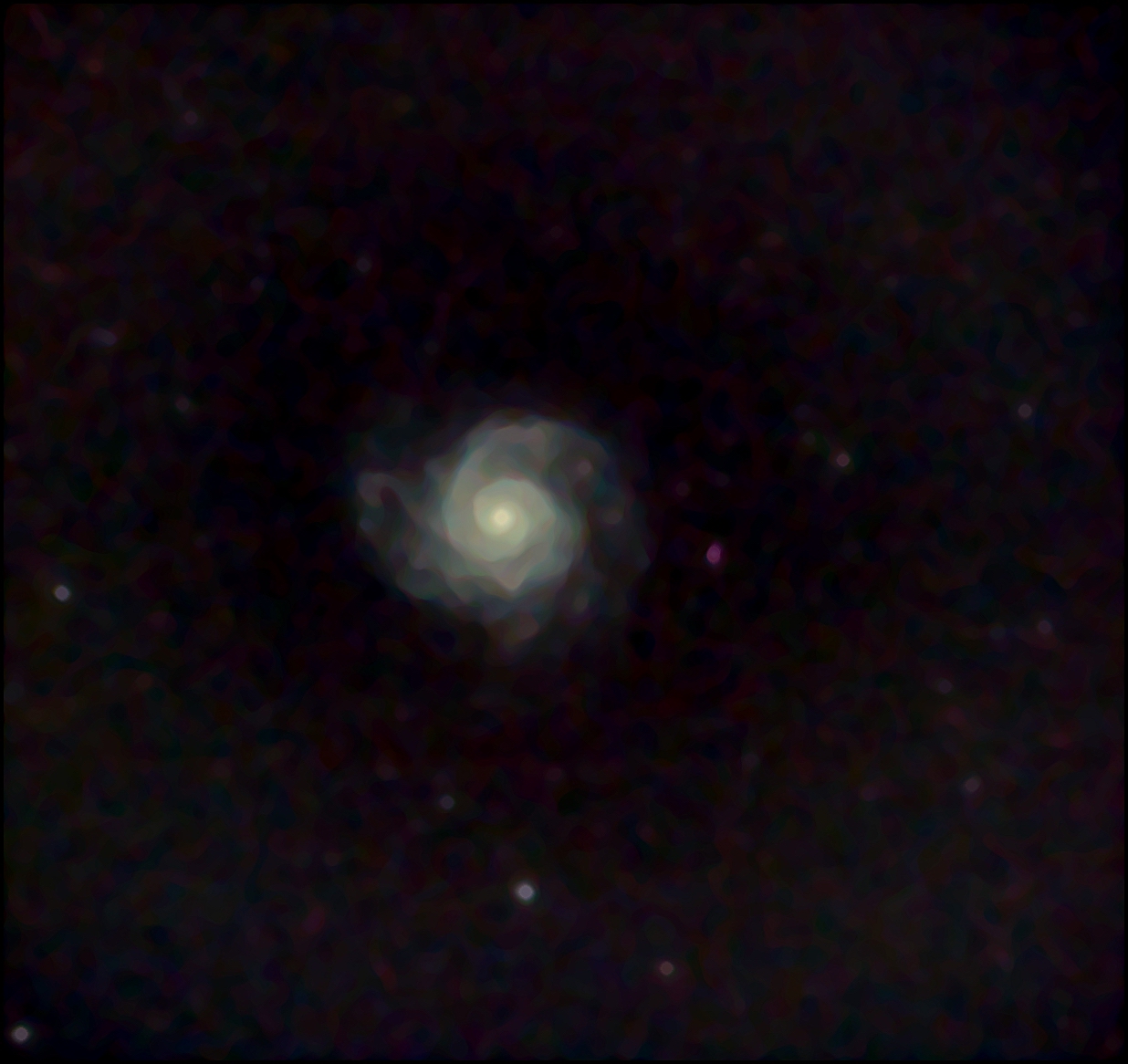Details
Because this galaxy is approximately 30 million light years away (over 10 times the distance of the Triangulum galaxy that Luke imaged) it is very dim and small, even in more powerful telescopes. Cataloged as Messier 74, its faintness gave rise to its name of the Phantom Galaxy. This was the most difficult of the imaging projects attempted by students in Fall 2021. However, because its spiral arms face us directly it is well studied by researchers looking into such spiral structures in general.
Alexander used a WO Z103 apochromatic refracting telescope mounted on a Celestron CGX-L mount to track this galaxy across the sky. A field flattener was used to minimize aberrations and a light pollution filter was used to reduce stray light from artificial sources.The ZWO ASI294MC-P camera was cooled to a temperature of -10°C to reduce thermal noise in the sensor, so reducing the random noise in the images.
Twenty 2-minute frames were taken using the Ekos imaging suite while a small guide telescope and camera were used to monitor, and correct, the mount movement every three seconds. The mount control and image recording were accomplished using the Ekos software and processing was done using SiriL. The techniques used to bring out the spiral structure had to be pushed so far that some other details had to be scarificed in Alexander's final image.

